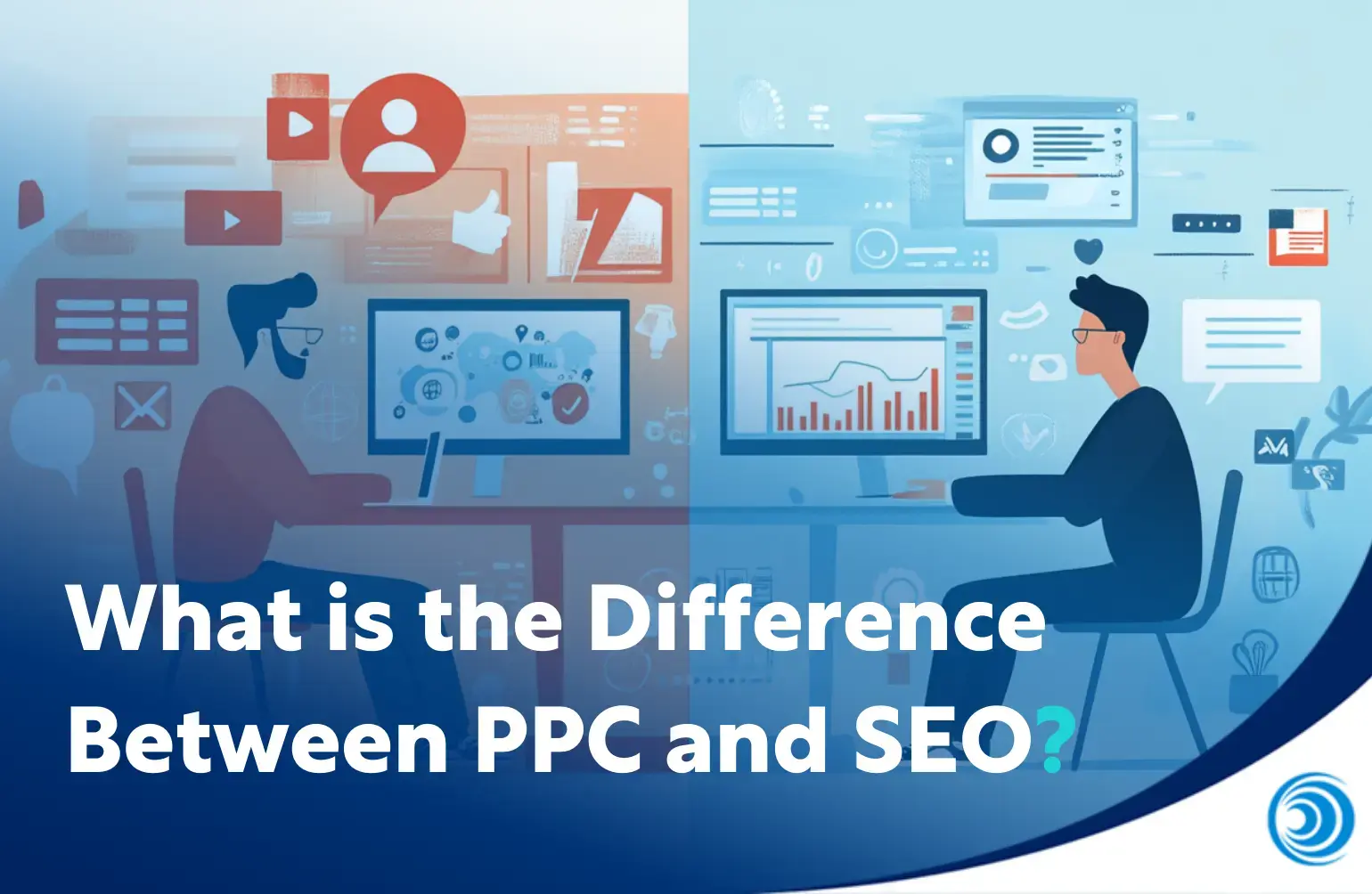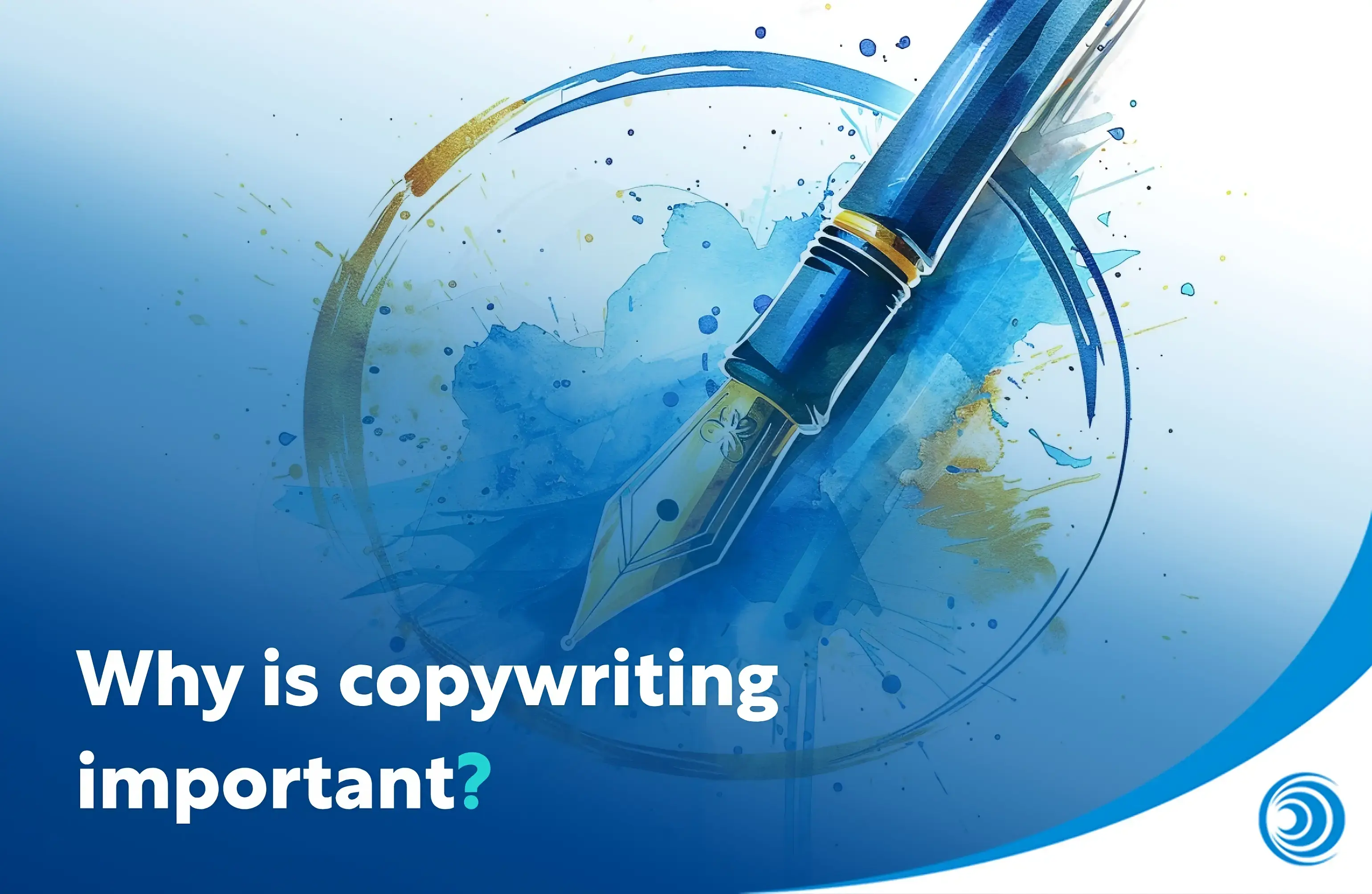
Why is copywriting important?
The question on every marketeer's mind is, why is copywriting important?
Copywriting is the lifeblood of marketing.
It's the bridge that connects brands with their audiences, using words to capture their attention and drive action.
Effective copywriting isn't just about filling a page with words; it's about crafting messages that resonate and persuade. It shapes audience perceptions, builds brand identity, and guides customers through the sales funnel - influencing their decisions and fostering loyalty.
Whether it's the concise creativity needed for social media marketing or detailed product descriptions, every piece of copy plays an indispensable role in a brand's overall marketing strategy.
What is copywriting?
Copywriting is the art of using words (often referred to as 'copy') paired with other creative assets, such as images, videos, and sounds, to inspire readers to take a desired action.
It is an essential part of marketing and advertising for both big and small businesses.
The term 'copy' was initially coined in the 15th century, when text used for publishing had to be physically copied by hand.
Copywriting plays an incremental role in shaping customers' perceptions of a brand and their shopping habits.
Persuasive copywriting should influence readers to act, whether purchasing a product or service or forming an opinion about the brand.
What are the different types of copywriting?
Copywriting comes in many different shapes and sizes.
It's important to note that good copy will ensure brand consistency across all marketing material.
Let's explore a few of the most common forms it takes.

Web copywriting
This is arguably one of the most common forms of copywriting.
Whether you have a business online or offline, you are more than likely to have a website, and on that website you will have:
-
A section explaining what you do and why
-
A section explaining what your company's products or solutions is in more detail
-
A section for your blogs
-
A section directing people how to contact you
-
A section that captures customer data (to help increase conversion rates)
Each segment of your website requires a substantial amount of copy to be written.
Copy written for websites and landing pages must be optimised for search engines.
Skilled copywriters should understand search engine optimisation (SEO) in-depth. They will take this knowledge into consideration when writing top-quality content.
Social media copywriting
Social media copywriting is copy specifically written for social media channels—think Instagram captions or LinkedIn and X posts.
Social media marketing often allows for more creativity and freedom. Although writers are often faced with the strict constraints of character limits, like the 280-character limit on X (formerly Twitter).
With short attention spans and unfavourable social media algorithms, customers can easily miss a business posts.
Social media copy requires creativity and conciseness—marketers must get their point across in a few words.
Ubers recent paid social campaign is a fantastic example of this. The use of an enticing hook is enough to stop potential customers from scrolling past. In just a few simple words, they conveyed their point across to readers.

OOH (Out of Home)
Out-of-home (OOH) refers to advertising that is outside in the real world, in places where a large group of people are likely to see it. This includes:
-
Billboards
-
Buses
-
Train stations
-
Bus stops
-
Inside of trains
-
Inside and outside of taxis
The primary goal of OOH copy is to inform a mass audience about a key business message.
During 2018's nation-wide chicken shortage, KFC tactfully used billboards to share its apologies and communicate a message to customers.

It can also be an effective tool when launching a new product or service. Such as, when Google introduced the Google Pixel 2 Smartphone through bus wrap advertising.
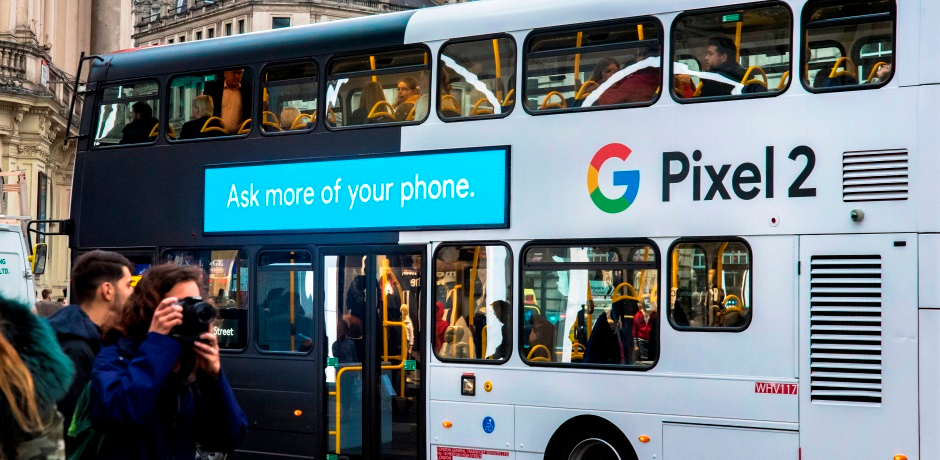
It is more common to see big corporations and conglomerates (multi-industry companies) using out-of-home advertising, as it is extremely expensive, and they are likely to have much larger marketing budgets. For example, it can cost upwards of £1000 per week to wrap a London bus.
UX copywriting
UX stands for user experience; the term is often used interchangeably with user interface (UI).
It refers to the quality of websites and mobile apps, focusing mainly on how easy they are to use.
The term UX copywriting refers to copy that is written within these applications.
If you like the language in Neo bank apps like Monzo or Starling, that's thanks to a copywriter. Great copy is never an accident.
A term often referenced in conjunction with UX copywriting is 'microcopy', this is the small pieces of copy used to help customers navigate an app.
Below, is a classic example of this:
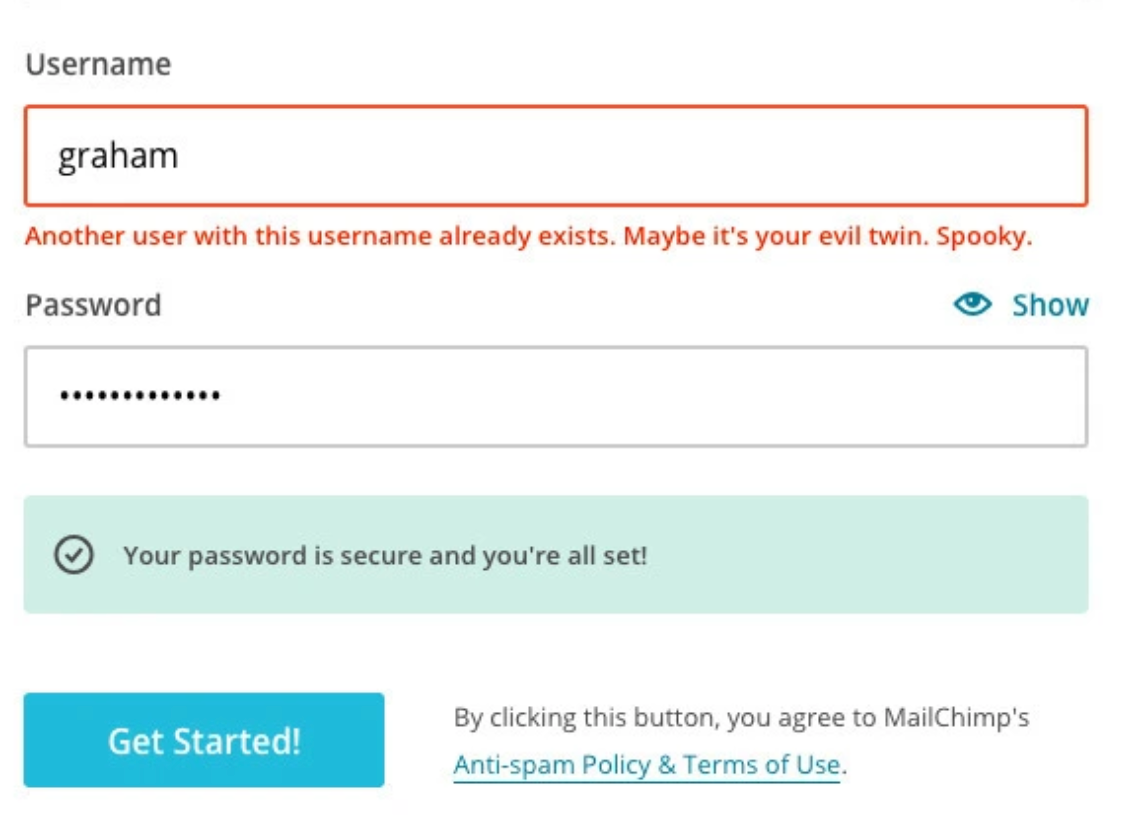
Video/audio copywriting
Before you see it or hear it, someone has to write it.
This type of copywriting refers to anything in a video or auditory format that is used for marketing materials, such as:
-
Radio adverts
-
YouTube adverts
-
Sponsored video content
-
Television adverts - like the famous Cadbury Gorilla
These all start off as storyboards and scripts, before eventually being turned into its final form and being watched/listened by the target audience.
Product copywriting
Product copywriting is straightforward: it's writing copy for products.
This includes the product descriptions on eCommerce websites.
It is often seen as product descriptions on eCommerce websites. It's designed to provide more context around a product or service, as well as generate more sales.
Look at this example below.
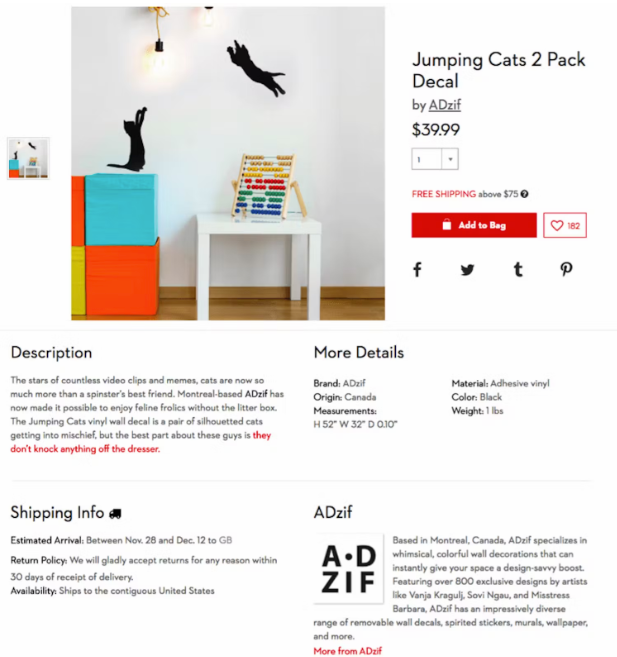
SEO copywriting
As we teased in the previous section, SEO copywriting is an extension of web copywriting.
Search engine optimisation (SEO) is writing engaging content that is optimised for Google's, and other search engines, SERPs (search engine results pages)>
In a nutshell, it ensures that what is written is visible to who you want to read it.
This is done by using certain phrases, known as keywords, as well as descriptions to communicate to Google that your content deserves to be ranked highly in the results.
What makes a good professional copywriter?
Whether you're reading this as an in-house copywriter, looking to hire freelance writers, or just curious to know more - what makes a good copywriter?

Understand your target audience
A deep knowledge of your target audience is key. You may have a great way with words, but if you don't understand who's reading them, they won't have the desired effect.
Understanding the customer's problems and needs will help you write content that will provoke a reaction, like signing up to a webinar or newsletter.
Accept criticism
Copywriters often work closely with other marketing professionals such as graphic designers and website developers. The work they produce will often be judged by their peers.
Being able to accept criticism, remaining calm and logical when someone critiques your work is vital.
Focus on the why and how. Learn what they don't like about your work and figure out how it can be improved.
The key to that is focusing on the why and the how. Your feelings aren't important at all here. Once you know why they don't like it and figure out how to improve it things will go smoothly.
Learn quickly
A skilled copywriter should be able to write about virtually anything from cybersecurity to fashion.
The ability to understand topics and different industries quickly is indispensable for a copywriter - especially if you are a freelance copywriter who serves a variety of clients.
To obtain this information in the first place, you have to become a great researcher. Not only do copywriters need to be good at finding information, they have to ensure that the information is relevant and factual.
What makes good copywriting?
Generally speaking, good copywriting is copywriting that achieves its pre-determined goals.
However, this isn't always the case.
For instance. if the goal of a blog post was to get 10 webinar sign ups, but it actually gets 7, then in theory it has failed. But this may not necessarily be the fault of the copywriter. The blog itself may have actually been well written, but distributed poorly by another member of the marketing team.
Taking this anomaly out of the equation, here are some general rules of thumb for successful copywriting.

Good hook/introduction
Readers may not always judge a book by its cover, but they'll most certainly judge it by its opening line.
Whatever the form of copywriting, it needs to be able to capture an audience's attention quickly.
Nowadays, it's not just competition against competitors, writers must compete for a reader's attention.
With an endless amount of content out that, it can be a struggle to get people to look up, stop scrolling, or even remember what they have seen,
Take a look at some fantastic examples below:


Balance jargon
It's common for marketers to say that writers should avoid the use of jargon, but it's not as simple as that.
Sometimes, in order to demonstrate thought leadership, you may need to use some jargon. Though, it must be used in the correct context.
For example, if you are writing for an audience in the payments industry, words and phrases such as BIN sponsorship, card issuing, and FX may need to be used. In this circumstance, it is suitable as the reader will understand these terms.
Research
Written content must be engaging and informative.
Ensure that the topic of your copy is well researched - what you're saying must be relevant and factual.
Refer to reliable primary and secondary sources throughout your copy to credit your knowledge.
Consistent tone of voice
A tone of voice is the way that a business speaks to its audience.
It should be distinctive - even when you're branding is not visible, a customer should be able to recognise that is your business who is talking to them.
Although marketing copy is written for a mass audience, it should read like it is meant for one person. If copy is impersonal, it won't have an impact on the customer journey.
Copy, especially B2C copywriting, should resonate with the individual, influencing their buying decision.
Use phrases and personal pronouns such as you, I, we, them, us, our to create the perception that you are having a 1 - 1 conversation with the reader.
Conclusion
Copywriting is a core element of marketing - acting as a mediator between brands and their audiences.
It goes beyond words on paper (or a screen); it's about crafting message that shape perceptions, build brand identity, and guide customers on their purchasing journey.
Every form of copywriting plays a crucial role in a brand's overarching strategy.
Effective copy must maintain brand consistency, be well-researched, and resonate personally with the reader.
A skilled copywriter understands their audience deeply, can adapt quickly to different topics, and create compelling narratives that inspire action and foster loyalty.



